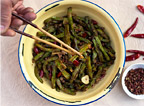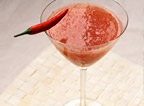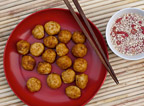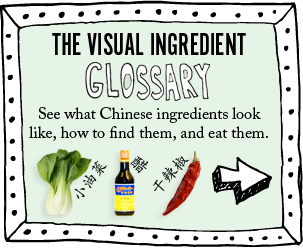ingredient stalker: what are chinese black mushrooms (shiitake mushrooms)?
Chinese Black Mushrooms or 香菇 (xiāng gū), are medium-size brown mushrooms that have a strong, meaty flavor. They taste good in soups, stir-fried in vegetables (I stir-fried them with snow peas and chicken broth in the video above), or sliced-up and thrown into a lettuce salad. If you've never heard of them, you've probably heard of Shiitake Mushrooms which is their Japanese name. Contrary to what you might think, you should buy the mushrooms dried rather than fresh. The drying process intensifies the flavor and makes them taste better. Fresh ones can taste a little ho-hum. In the video above, I show you how to prepare Chinese Black Mushrooms, talk about some of their health benefits, and we have a blind taste test to see, once and for all, if re-hydrated mushrooms taste better than fresh.
Chinese Black Mushrooms or Shiitake Mushrooms can be found at most grocery stores these days. Oddly, fresh mushrooms are what I find the most but if you go to an asian grocery you can find the dried version.
 5 Comments | |
5 Comments | |  Permalink
Permalink  health,
health,  ingredient stalker,
ingredient stalker,  vegetables,
vegetables,  videos
videos 











